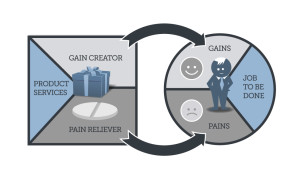Entering Foreign Markets in the Information Technology Industry
 There is an enormous difference between building and leading a small team in the same building and then building, leading and managing an organization spread across many locations, cultures and time zones. The more we can sustain growth without having to build global organizations the more scalable and solid our business model is.
There is an enormous difference between building and leading a small team in the same building and then building, leading and managing an organization spread across many locations, cultures and time zones. The more we can sustain growth without having to build global organizations the more scalable and solid our business model is.
Today many information technology companies don’t need to worry too much about entering foreign markets.
If we run a web based business model, use English as our main language, are capable of generating a steady stream of inbound leads and can convert them to customers on our website or over the phone, then why should we worry about opening offices in foreign markets until we have fully saturated this opportunity? Adding French, German, Italian, Spanish, Turkish etc. to the languages we support may also be done with no physical presence in these markets. If we need a telesales or support function we can often find a certain amount of foreign speaking people in the location where we are currently operating and build the base before we move out to scale the business to local market leadership. Engaging with people working remotely is also an opportunity for scaling our business without the need for traditional local operations.
 Many companies are not so fortunate and have business development, marketing and especially sales processes that do actually require a presence in the markets where they choose to operate. If our value proposition is comprehensive, our sales process complex, the average sales cycle long, the average solution price high, the need for product localization substantial, the need for on-location support necessary and we face local competition, then customers will be reluctant to engage with us unless we have a reasonable local presence.
Many companies are not so fortunate and have business development, marketing and especially sales processes that do actually require a presence in the markets where they choose to operate. If our value proposition is comprehensive, our sales process complex, the average sales cycle long, the average solution price high, the need for product localization substantial, the need for on-location support necessary and we face local competition, then customers will be reluctant to engage with us unless we have a reasonable local presence.
Global Niche Markets
Many niche industries are global meaning that potential customers get together from all over the world to attend industry events such as exhibitions, conventions and conferences. Participating in such events may give us an opportunity to check the competition, meet with potential customers and test how receptive they are to our value proposition vis-a-vis their alternatives. Such activities may give us an indication of where we could move next. If the industry is small there may not even be an urgent need for a local presence in each market since our competitors are not present there either, or at least we can correlate setting up an operation with the first customer project.
The SMB markets
If we are addressing the SMB markets then international events are not the place to go and we have to use other approaches to decide which foreign markets we should look at first.
So how do we choose those foreign markets where the barriers to entry are lowest and the market potential most attractive?
The opportunity approach
The most popular approach is responding to inbound opportunities. We get an inquiry from Nigeria today and we respond to that. Tomorrow we get an inquiry from Venezuela and we respond to that. Can we grow a business this way? Yes we can, but it will seldom lead to global market leadership unless we at some point start investing in systematically developing some of these markets. If we have absolutely no clue which market to approach and we are not prepared to invest in market assessments, then the opportunity approach is probably better than just randomly choosing a market such as the US, the UK or Germany.
The bulldozer approach
The bulldozer approach, which simply takes the markets according to their size, is available to companies with the combination of deep pockets and the ambition for global market leadership. We may do preliminary market assessments, but we primarily use the information to decide how we should position ourselves and what changes we need to make to win the market. Then we set up a subsidiary, hire people and get started. Getting to profitability (and then market leadership) takes the time and money it takes.
The lean approach
What if we don’t have the deep pockets, but still have the ambition of proactively selecting markets where we can  achieve a leadership position?
achieve a leadership position?
The first thing we need is an extremely competitive value proposition. Either we have something no one else is offering, and for which there is a compelling need or we must have some other substantial advantage over the local competitors. The only issue is that we will most likely not know if that is the situation until we have tested the individual market.
If we do not have deep pockets then we most likely cannot afford making in-depth markets analysis in 25 countries to find the best ones to invest in. We need a template for doing fast desk research and use publicly available information to rate the options we have.
We need an “ideal market profile” that we can use to quickly disqualify potential markets. If we had all the information in the world then what information would we use to assess and rank the market? As we don’t have all the information in the world then which proxies can we use to perform the ranking?
With the Internet we now have access to much more information than we had in the last century and desk research can actually get us a long way in a short time mapping the opportunities available to us.
Let’s assume we have brought the list down to 10 countries, but we only have the resources to penetrate one or two markets.
Again the ideal market profile will help us make a fast and inexpensive prioritization, but not without some bold leadership behavior. Decisions never make themselves (at least seldom in our favor) and there will rarely be enough data to have a clear indication of the best choices. My recommendation is to get started and learn. Invest what we can afford to lose, set up a brief plan with clear milestones and make corrections along the way. Pause if the results deviate too much from the plan and what we can afford to invest. Lick your wounds, reconsider and try again.
The lean approach is very similar to “the customer development process” defined by Steve Blank and documented in his books. The only difference is that when going for global growth we need to get out of the building and then out of the country to meet with the foreign customers that we will want to serve. It is a learning process rather than a process for instant success.
Set your expectations right and get going.








